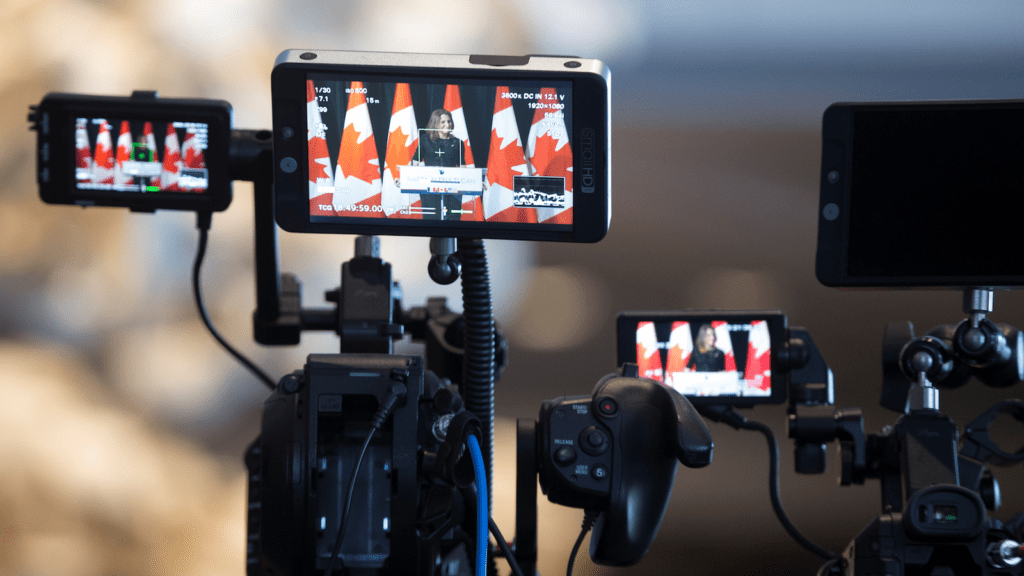In the wake of President-elect Donald Trump’s decisive victory in the November 5 vote, many Canadians are unsettled and uncertain about what the future holds, judging from my social media feeds. Trump’s previous tenure, after all, prompted both a full-on national effort to buttress free trade in North America and a trade war in steel and aluminum, later resolved. Canada’s system of supply management in the dairy industry came under particular scrutiny. Trump has promised to impose an across-the-board 10 percent tariff on all imports to the United States. It would be naive to think there isn’t, at the very least, turbulence ahead.
From a Canadian governing perspective, however, there’s little to be gained from hand-wringing, any more than there was in early 2017 when the newly elected president was vowing to rip up the North American Free Trade Agreement, cut loose international allies and repatriate America’s manufacturing supply chains, all overnight. Far more urgent is finding a line through the murk. And there are threads of hope, if not reasons for confidence, from a Canadian perspective.
First is that we’ve been here before. Canadian officials across the spectrum, from every order of government and within the various bureaucracies, spent the better part of 2017 and 2018 engaging with their US counterparts, hammering home the message that they need us, just as we need them.
Canada is the largest export market for two-thirds of American states. Millions of US jobs depend on trade with Canada. We provide them with essential uranium, electricity, natural gas and oil. Those facts were persuasive six years ago and will be persuasive again. Personal relationships have been established. Everyone knows who and what they’re dealing with, on both sides.
Second, the Canada-United States-Mexico Agreement was negotiated under the first Trump administration. The agreement comes up for its first six-year renewal in July 2026. Trump proclaimed this the greatest deal ever struck when he signed it in 2018.
Admittedly, there will be new protectionist threats to be met — the most pressing being the need to move Canada beyond the risk of an across-the-board 10 percent tariff on imports. We can expect that an incoming US trade representative, reportedly not Robert Lighthizer (Trump’s former chief trade negotiator), will take another hard run at supply management in dairy. But there appears to be a window for preparation this time that didn’t exist in 2017.
Third comes a set of considerations that are new.
The first is that the pressure for Canada to rapidly supercharge economic diversification, natural resource development and tech innovation, as Paul Samson and Horatio M. Morgan have outlined, now becomes an unstoppable force.
This will be tough — in some respects, painful — because it will require a shifting of resources away from nice-to-haves toward must-haves in areas that Canadians have typically taken for granted. But it’s no less necessary for all that. Canada has the capacity to become a technology superpower. Profound risk can be a lever like no other to incentivize this shift.
Relatedly, the international and domestic pressure on Canada to dramatically increase spending on defence and security, which had already been swelling, now receives a very strong push from the incoming Trump administration.
This is ironic, of course: even as the fraying US-led multilateral system upends international stability, a principal source of that instability pressures Canada’s political class (because all the national parties have been laggards in this respect) to make us more secure. Be that as it may, this shift was overdue. Devising a way to quickly push military and surveillance assets into the islands and waterways of the Arctic Archipelago, while further reinforcing the Canada-US border, will be job number one for policy makers.
The pressure for Canada to innovate, diversify and fortify its military, in its own national interest, will ultimately help us cope with geopolitical shifts that were already under way long before the current US election cycle. The country must finally begin to behave like a fully sovereign middle power with precious assets of its own to protect, rather than like an understudy.
Will the new era, which may last far longer than four years, be painless? Not at all. The shocks to our assumptions and our system are likely to come thick and fast. The discussion around immigration, not just in the United States but everywhere, is bound to get more difficult as climate change impacts worsen and desperate people continue to move northward. In the near-term, life in Canada could get more expensive and uncertain. Repatriated supply lines and “friend-shoring” will mean that we manufacture more of what we use and need here at home. All this will cost us. Our collective standard of living may drop.
But is there any point in tearing our hair out and gnashing our teeth? Temporarily, it may be cathartic. But crisis management isn’t about bemoaning one’s fate, parsing the reasons for failure or pointing fingers. It’s about preventing the very worst outcomes by seizing opportunities where they emerge. That’s where we are now.
A version of this article earlier appeared onSubstack.
Source link : http://www.bing.com/news/apiclick.aspx?ref=FexRss&aid=&tid=673758e54d8f47ecaf7412cee1376624&url=https%3A%2F%2Fwww.cigionline.org%2Farticles%2Ffacing-trump-20-canada-should-innovate-diversify-and-fortify%2F&c=16438906805850885324&mkt=en-us
Author :
Publish date : 2024-11-15 00:58:00
Copyright for syndicated content belongs to the linked Source.
